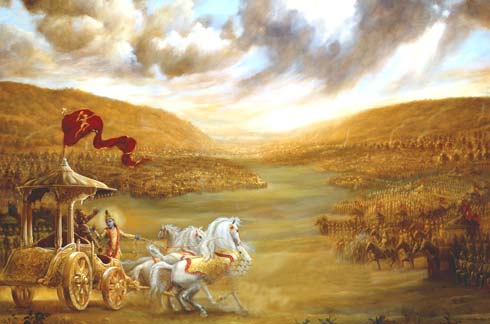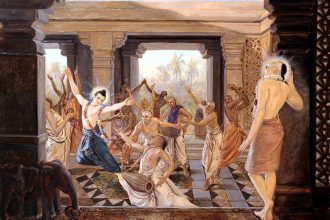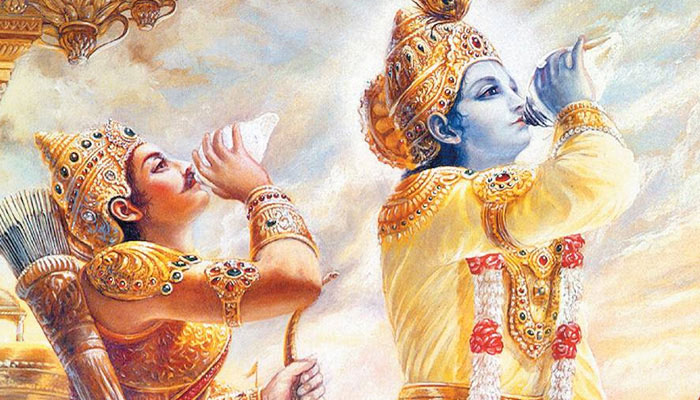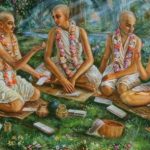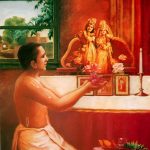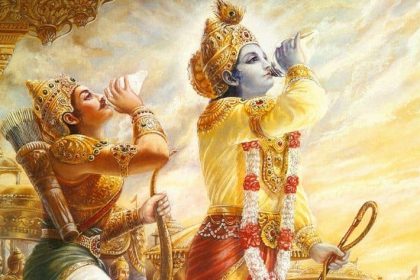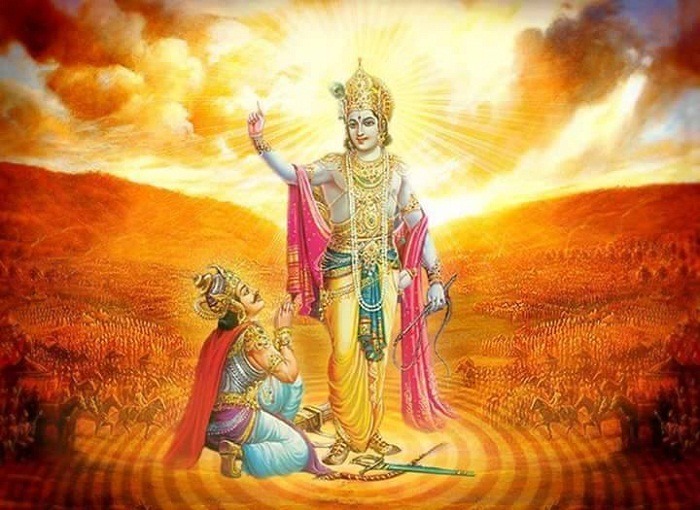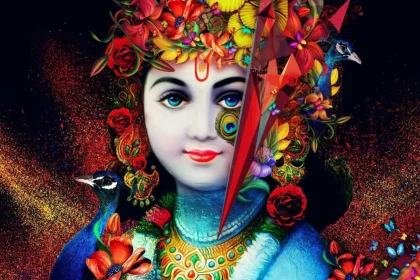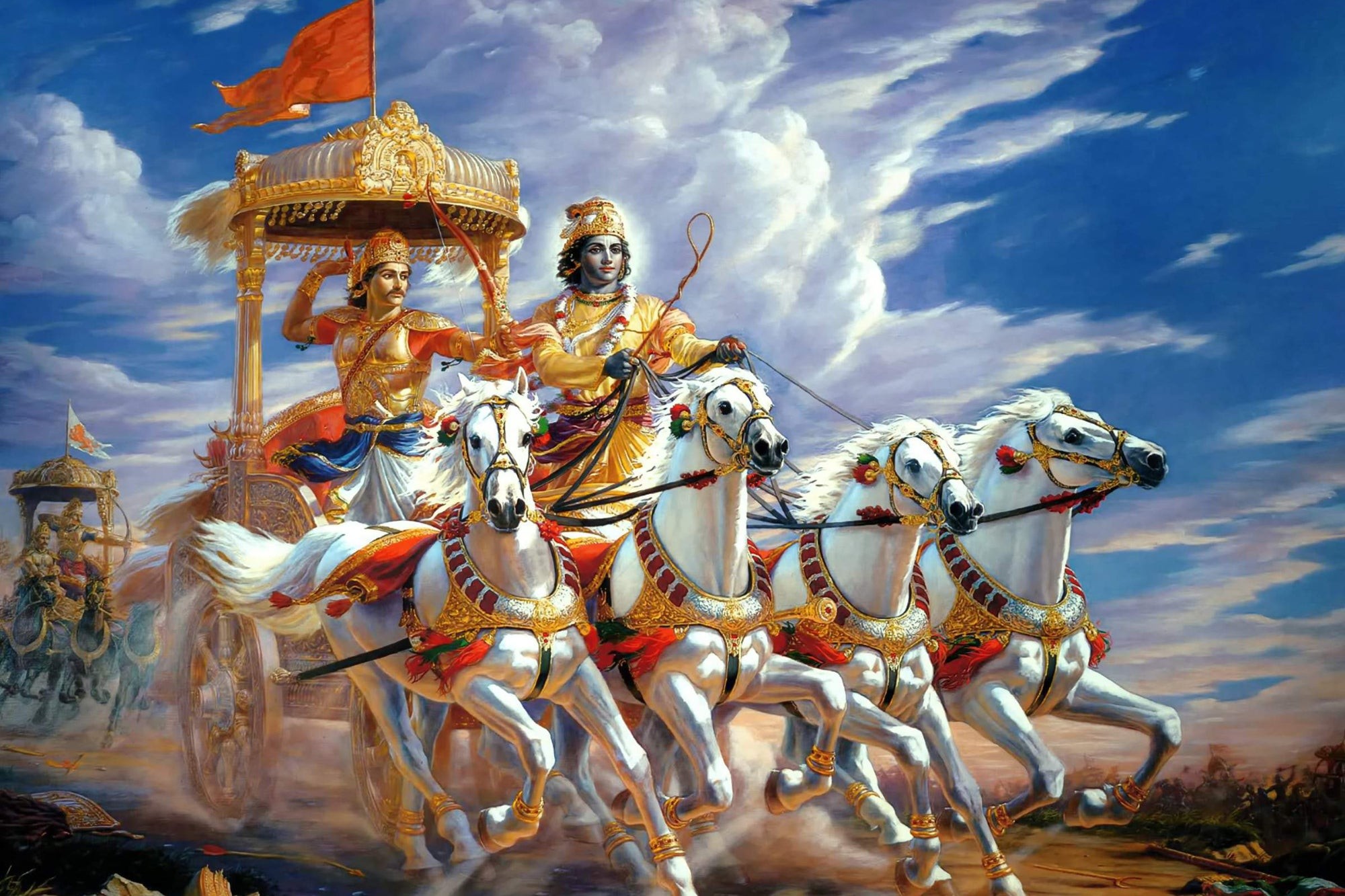TEXT 25
maharṣīṇāṁ bhṛgur ahaṁ
girām asmy ekam akṣaram
yajñānāṁ japa-yajño ‘smi
sthāvarāṇāṁ himālayaḥ
SYNONYMS
mahā-ṛṣīṇām—among the great sages; bhṛguḥ—Bhṛgu; aham—I am; girām—of vibrations; asmi—I am; ekam akṣaram—praṇava; yajñānām—of sacrifices; japa-yajñaḥ—chanting; asmi—I am; sthāvarāṇām—of immovable things; himālayaḥ—the Himālayan mountains.
TRANSLATION
Of the great sages I am Bhṛgu; of vibrations I am the transcendental oṁ. Of sacrifices I am the chanting of the holy names [japa], and of immovable things I am the Himālayas.
PURPORT
Brahmā, the first living creature within the universe, created several sons for the propagation of various kinds of species. Among these sons, Bhṛgu is the most powerful sage. Of all the transcendental vibrations, the oṁ (oṁkāra) represents Kṛṣṇa. Of all sacrifices, the chanting of Hare Kṛṣṇa, Hare Kṛṣṇa, Kṛṣṇa Kṛṣṇa, Hare Hare/ Hare Rāma, Hare Rāma, Rāma Rāma, Hare Hare is the purest representation of Kṛṣṇa. Sometimes animal sacrifices are recommended, but in the sacrifice of Hare Kṛṣṇa, Hare Kṛṣṇa, there is no question of violence. It is the simplest and the purest. Whatever is sublime in the worlds is a representation of Kṛṣṇa. Therefore the Himālayas, the greatest mountains in the world, also represent Him. The mountain named Meru was mentioned in a previous verse, but Meru is sometimes movable, whereas the Himālayas are never movable. Thus the Himālayas are greater than Meru.
TEXT 26
aśvatthaḥ sarva-vṛkṣāṇāṁ
devarṣīṇāṁ ca nāradaḥ
gandharvāṇāṁ citrarathaḥ
siddhānāṁ kapilo muniḥ
SYNONYMS
aśvatthaḥ—the banyan tree; sarva-vṛkṣāṇām—of all trees; deva—ṛṣīṇām—of all the sages amongst the demigods; ca—and; nāradaḥ—Nārada; gandharvāṇām—of the citizens of the Gandharva planet; citrarathaḥ—Citraratha; siddhānām—of all those who are perfected; kapilaḥ muniḥ—Kapila Muni.
TRANSLATION
Of all trees I am the banyan tree, and of the sages among the demigods I am Nārada. Of the Gandharvas I am Citraratha, and among perfected beings I am the sage Kapila.
PURPORT
The banyan tree (aśvattha) is one of the highest and most beautiful trees, and people in India often worship it as one of their daily morning rituals. Amongst the demigods they also worship Nārada, who is considered the greatest devotee in the universe. Thus he is the representation of Kṛṣṇa as a devotee. The Gandharva planet is filled with entities who sing beautifully, and among them the best singer is Citraratha. Amongst the perfect living entities, Kapila, the son of Devahūti, is a representative of Kṛṣṇa. He is considered an incarnation of Kṛṣṇa, and His philosophy is mentioned in the Śrīmad-Bhāgavatam. Later on another Kapila became famous, but his philosophy was atheistic. Thus there is a gulf of difference between them.


